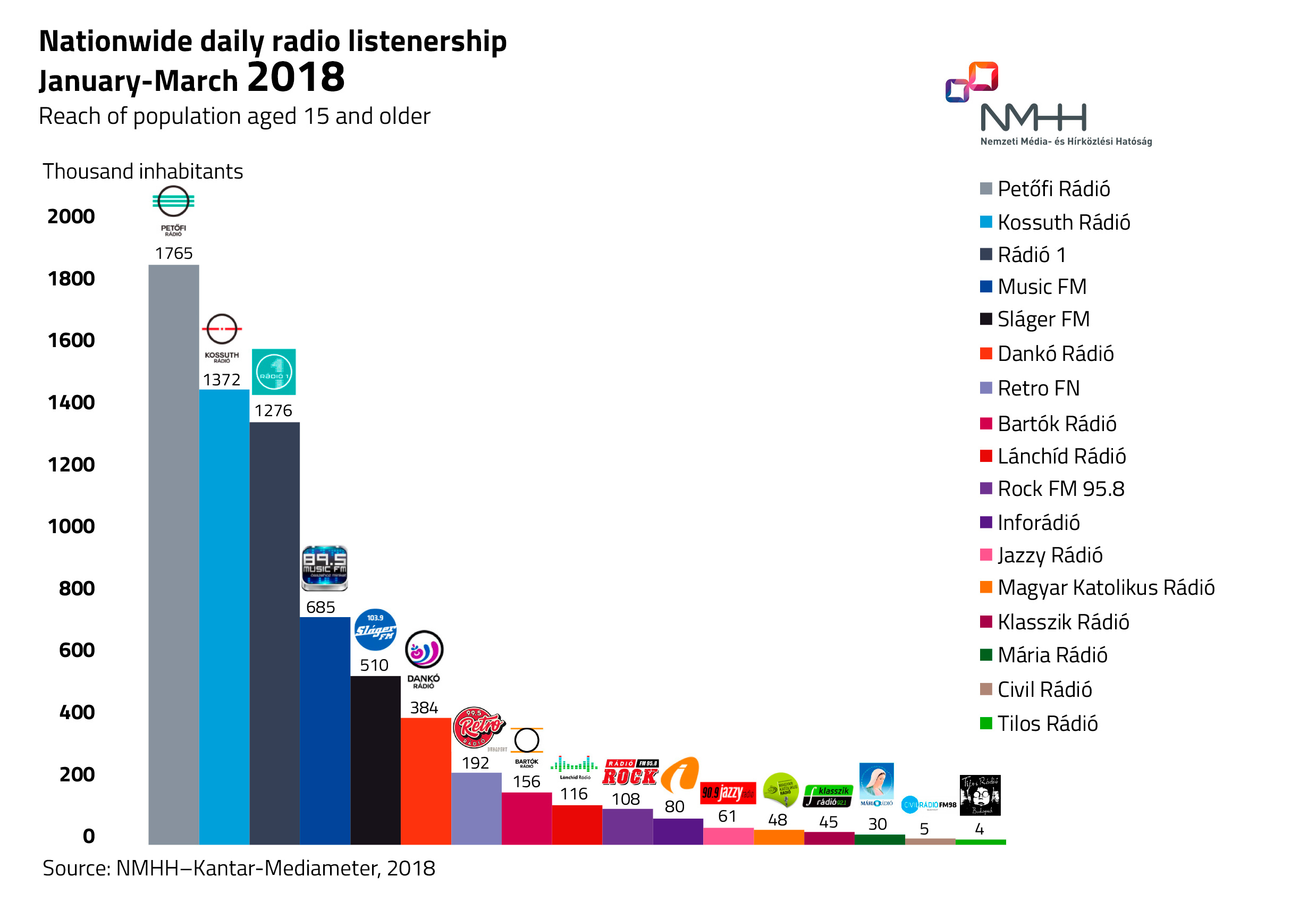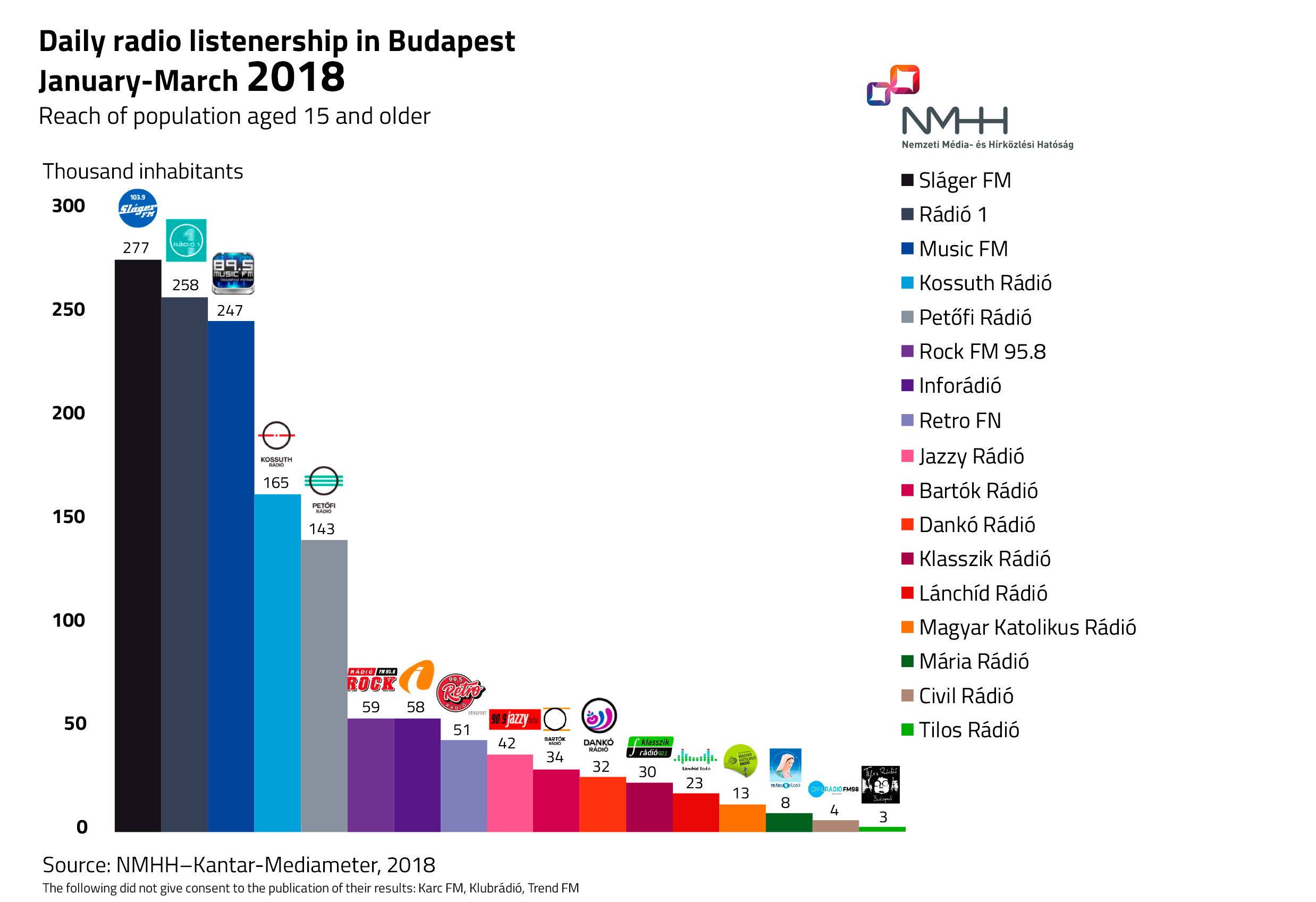NMHH: Standard radio listenership measurement data for Q1 published
Petőfi Rádió is the most listened-to station, followed by Kossuth Rádió and Rádió 1
In Hungary, almost 6.5 million people tune in every day; the number of those who listen to the radio remains high as shown by the listenership data for the first quarter, published by the National Media and Infocommunications Authority (NMHH) on its website. The Authority launched its call to tender for radio audience measurement last year with the aim of providing a standard, detailed measurement methodology in order to ensure the transparency of listenership measurement of radios across the country, in Budapest and at the local level, while making radios more attractive for advertisers. The data may be accessed by radio stations and agencies free of charge and without any limitations.
The first aggregated quarterly listenership data have been released to radio market operators. Radio stations and agencies have unlimited access to the data produced using the methodology proposed by radio market experts, while, as in the past, a reduced range of information is made available to the general public to protect the economic interests of market operators. From now on, the NMHH will prepare summaries of the survey results and publish them at nmhh.hu under Researches, with more detailed content to be provided on the website in early May. In any event, those concerned will be the first to have access to the data through the research company’s database, with public data being released on the Authority’s website subsequently within a couple of business days in each case. Supplemented with tables and charts, these summary studies are accessible to everyone free of charge, meaning that, as in the past, a reduced range of information is made available to the general public to protect the economic interests of market operators.
The Authority adopted the methodology for audience measurement after a number of consultations with market operators, taking the views of all stakeholders into consideration. The Hoffmann/M-Meter consortium won the public procurement procedure launched by the NMHH covering the period until 2020, based on which the data on radio stations broadcasting nationwide and in Budapest are updated monthly, data for cities with county rights and networked coverage areas are updated quarterly, while data for smaller, local coverage areas are updated every six months on the Authority’s website. Measurements represent radio listening patterns among the population aged 15 and older.
93 per cent of the population listens to the radio every week
Measurements for the first quarter show that, across the country, almost 6.5 million people listen to the radio on a daily basis and over 7.7 million on a weekly basis, so around 77% of the population tunes in every day and 93% at least once every week. On an average day, Petőfi Rádió has the highest number of listeners (1.8 million) nationally, followed by Kossuth Rádió (1.4 million) and Rádió 1 (1.3 million). Music FM’s listenership reached 685,000, while Sláger FM’s stood at 510,000.
As for Budapest, 76% of the population within the measured age group listened to the radio on a daily basis, while 93% on a weekly basis in the first quarter. The average daily number of listeners in Budapest was 277,000 for Sláger FM, followed by Rádió 1 with 258,000 and Music FM with 247,000. Two additional stations had a listenership exceeding 100,000 in Budapest: Kossuth Rádió (165,000) and Petőfi Rádió (143,000).


Audience measurement methodology
In accordance with the technical specifications of the call to tender, the new listenership measurement basically went back to the previous log-based measurement methodology (which have not been used for national measurements in the last ten years) for radio stations broadcasting nationwide and in cities with county rights as well as in networked coverage areas, with the exception of smaller, local coverage areas. In Hungary, the method, as previously applied, produces results through the processing of self-completed logs recorded online and offline simultaneously. This is a significant change as in recent years the phone-based Day After Recall (DAR) radio audience measurement methodology dominated in most segments the market. In the previous tender period, this methodology was used for radio audience measurement nationally and in Budapest. At the beginning of that period, in 2013, the Association of Radio Media Providers engaged the same company group that won the current tender to conduct radio listenership measurements.
The introduction of logged data was preceded by a short transition period involving the use of both methodologies simultaneously in order to allow market operators to prepare for the methodological transition, the receipt of results produced with the new methodology and their correct interpretation. Data for the first quarter now reflect log-based results.